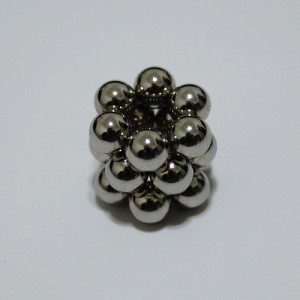There’s no other way to say it: sepsis is a horrible disease. It typically starts with a runaway bacterial infection in the blood, followed by a runaway immune response that severely damages the body it’s trying to save. The results: shock, multiple organ failure and—in between 210,000 and 375,000 people in the United States alone every year—death.
Part of the problem is that the methods available for treating sepsis aren’t particularly good. Antibiotics can kill the bacteria, but that still leaves bacterial debris floating in the bloodstream, fueling the already over-excited inflammatory response.
Removing the bacteria altogether—as fast as possible—would be the better solution. At least that’s what Daniel Kohane, MD, PhD, thinks. His lab at Boston Children’s Hospital’s Division of Critical Care Medicine has developed a new approach that combines magnetic nanoparticles, a synthetic molecule (called bis-Zn-DPA) that binds to the bacteria, and magnetized microfluidic devices to pull bacteria from the blood quickly and efficiently.
A magnetic attraction for bacteria
Kohane envisions the system working like this. The microfluidic devices would be incorporated into heart-lung (aka extracorporeal membrane oxygenation, or ECMO) machines, which intensive care units often use to help keep the blood of severely ill patients circulating and full of oxygen; plasmapheresis or dialysis machines would work as well.
“We would add the nanoparticles with bis-Zn-DPA to a patient’s blood when it is already outside the body,” explains Kohane, who runs the Laboratory for Biomaterials and Drug Delivery at Boston Children’s. “We would then turn on the magnets, pull out the bacteria and nanoparticles, and put their blood back in.
“The nanoparticles have a high ratio of surface area to volume, so you could get a lot of binding,” he continues. “The bis-Zn-DPA molecule binds to bacteria quickly, so, unlike the antibody-based systems, you don’t need to incubate the nanoparticles with the bacteria for a long time. And the particles are easy to separate from the blood.”

Imagine these magnetic buckyballs a million times smaller, coated in a molecular glue, pulling bacteria out of someone's blood. (sparr0/Flickr)
Filtering bacteria isn’t a new idea in the world of sepsis research. But what makes this approach stand out from those based on antibodies or other removal methods is the bis-Zn-DPA.
This synthetic molecule attaches itself tightly to molecules that are found in all kinds of bacterial cell walls but are absent from the membranes of human cells, thus ensuring that only bacterial cells get filtered from the blood. It also has a longer shelf life than antibodies and binds to members of both major bacterial families (Gram-positive and Gram-negative).
“With a small molecule like bis-Zn-DPA, it’s also easier to control which end of the molecule is facing the nanoparticles and which is available to bind bacteria,” Kohane adds. “It helps keep the binding activity high relative to antibody-based approaches.”
First steps toward filtration
This work isn’t Kohane’s first foray into magnetism; a few years ago, he started working on a magnet-based system for consistent triggered delivery of drugs for chronic pain. But it is his first attempt at addressing sepsis and its consequences.
So far the attempt looks promising. To date his team has only tested the approach on the lab bench. But as documented in the journal Nano Letters, the team has been able to pull E. coli (a frequent cause of bacterial sepsis) out of cow blood at 100 percent efficiency after just two cycles of filtration.
“We need to fine-tune the microfluidic system for optimal filtration,” says Kohane, “but if we get there, this could be a lifesaver for anyone with sepsis, regardless of whether they’re a child or adult.”








